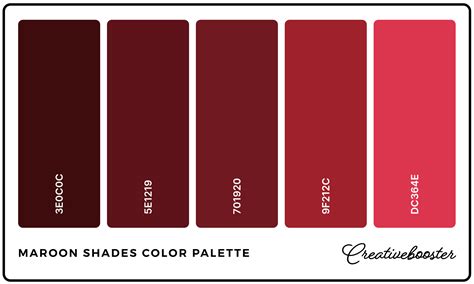Maroon colour hair is a mesmerizing shade that evokes sophistication, warmth, and passion. It is a mixture of burgundy and brown, with a richness that makes it stand out. Whether you’re seeking a subtle change or a dramatic transformation, maroon hair offers endless possibilities.

History and Evolution of Maroon Hair
The history of maroon hair dates back centuries. Ancient civilizations, including the Egyptians and Romans, used natural dyes from plants and minerals to create maroonish shades on their hair. In the 18th and 19th centuries, henna and other plant-based dyes were widely used to achieve maroon hair.
Today, maroon hair is achieved through a variety of methods, including:
- Permanent hair dye: Permanent hair dyes contain ammonia or other chemicals that penetrate the hair shaft and alter its natural color. They provide long-lasting results but require touch-ups as the hair grows.
- Semi-permanent hair dye: Semi-permanent dyes deposit color on the hair’s surface without altering its internal structure. They fade over time, usually lasting 4-6 weeks.
- Temporary hair color: Temporary hair colors, such as sprays, mousses, and chalks, can be used to create maroon hair without damaging the hair. They wash out with water or shampoo.
101 Shades of Maroon: From Subtle to Dazzling
Maroon hair comes in a wide range of shades, from subtle mahogany to vibrant crimson. Some of the most popular shades include:
- Mahogany: A deep, warm shade with hints of red and brown.
- Claret: A slightly lighter shade of mahogany, with a touch of burgundy.
- Auburn: A golden-red shade with a touch of maroon.
- Burgundy: A classic shade of maroon with a deep, rich color.
- Crimson: A vibrant, intense shade of maroon with a touch of pink.
Benefits of Maroon Hair
Maroon hair offers numerous benefits:
- Flattering to all skin tones: Maroon shades complement both warm and cool undertones, making them suitable for a wide range of skin tones.
- Adds depth and dimension: The rich, warm tones of maroon add depth and dimension to the hair, creating a sense of movement and volume.
- Hides imperfections: Maroon hair effectively hides gray hairs and other imperfections, making it a great choice for those looking to conceal discoloration.
- Provides a sense of confidence: A well-chosen shade of maroon hair can boost one’s confidence and self-esteem, enhancing both their appearance and well-being.
Common Mistakes to Avoid with Maroon Hair
When considering maroon hair, it’s essential to avoid common mistakes:
- Over-processing: Maroon hair requires careful processing to achieve the desired shade without damaging the hair. Avoid over-processing with bleach or strong dyes to prevent breakage and dryness.
- Ignoring maintenance: Maroon hair requires regular touch-ups to maintain its vibrancy. Neglecting maintenance can lead to fading, brassiness, and dullness.
- Wrong choice of shade: Choose a shade of maroon that complements your skin tone and personal style. Avoid shades that clash or are too overpowering for your features.
- Poor quality hair products: Use high-quality hair products designed for color-treated hair to protect and preserve the color. Cheap or inferior products can damage the hair and fade the color prematurely.
How to Care for Maroon Hair
Proper care is crucial for maintaining the health and beauty of maroon hair:
- Use color-protecting shampoos and conditioners: Invest in color-protecting shampoos and conditioners to prevent fading and extend the life of the color.
- Avoid heat styling: Heat styling can damage the hair and fade the color. Use heat protectants when heat styling is necessary and limit the use of hot tools.
- Deep condition regularly: Deep conditioning treatments restore moisture and nourishment to the hair, reducing the risk of breakage and keeping the color vibrant.
- Touch up roots: As the hair grows, touch up the roots regularly to prevent a noticeable difference in color between the new and old growth.
12 Tips and Tricks for Maroon Hair
- Start with a professional consultation: A professional hairstylist can help you choose the perfect shade of maroon and ensure it’s applied correctly.
- Consider your skin tone: Choose a shade of maroon that complements your skin tone. Warm skin tones look best with warmer shades, while cool skin tones suit cooler shades.
- Test the color first: Before applying maroon hair dye to your entire head, test a small section to ensure you’re happy with the color.
- Follow the instructions carefully: Always follow the manufacturer’s instructions when applying hair dye to avoid mistakes.
- Protect your skin: Wear gloves to protect your skin from hair dye stains.
- Use a color-locking shampoo: Color-locking shampoos help seal the color into the hair, preventing fading and prolonging its vibrancy.
- Avoid chlorine: Chlorine in swimming pools can damage hair and fade color. Rinse your hair with fresh water before and after swimming to minimize damage.
- Trim split ends: Regular trims remove split ends, preventing further damage and maintaining the health of the hair.
- Experiment with highlights and lowlights: Adding highlights or lowlights in shades of maroon or complementary colors can add depth and dimension to the hair.
- Embrace the natural fade: Maroon hair fades over time, but this can create a beautiful, sun-kissed effect. Embrace the natural fade and enjoy the gradual change in color.
- Try a maroon hair mask: Maroon hair masks can enhance the color, restore moisture, and improve the overall health of the hair.
- Have fun with it: Maroon hair is a vibrant, expressive color. Have fun with it and experiment with different shades and styles to find what suits you best.
